Scientists Have Analyzed Earwax To Determine That World War II Was Incredibly Stressful – For Whales.
Scientists have analyzed earwax to determine that World War II was incredibly stressful – for whales.
More Posts from Our-cosy-library and Others
لماذا يرتفع معدل الموت المفاجئ
الافتراض العام هو أننا نعيش في عهد مهووس بتعاليم السلامة. لقد تقلصت المزاليق ومتاهات اللعب في الملاعب الأمريكية لحماية الأطفال من السقوط الخطر. العديد من الولايات لديها قوانين تتطلب من سائقي الدراجات ارتداء خوذات؛ وبعض المنتجات لديها تحذيرات سلامة سخيفة جدا لدرجة أنها تثير السخرية. ( الحبوب المنومة التي "قد تسبب الوهن"، على سبيل المثال). ولكن الأرقام تشير إلى قصة أخرى. وفقا لكتاب جديد، (حذرا: دليل المستخدم إلى عقولنا المهووسة بخطر الإصابة)، انخفض معدل الوفيات المفاجئة بشكل كبير من عام 1918 إلى 1992، ولا شك بسبب الاهتمام الجديد نحو أنظمة السلامة والعلامات التحذيرية. ومع ذلك، في عام 1992، توقف انخفاض الوفيات المفاجئة - ومنذ عام 2000، كان الارتفاع بمعدلاتها بدأ مرة أخرى. البيانات حول حوادث السيارات لافتة للنظر بشكل خاص. يقول (جوشوا روثمان) في مقال نشر مؤخرا على موقع "نيويوركر": "في عام 2015، بعد ما يقرب من قرن من الانخفاض المطرد في وفيات المتعلقة بالسيارات ، السائقين و المشاة وسائقي الدراجات النارية، ارتفع عددهم إلى ثمانية، عشرة، واثني عشر بالمائة على التوالي". مؤلف الكتاب المذكور - ستيف كاسنر، يكتب أن هناك العديد من التفسيرات المحتملة لهذا، ولكن العديد منها يشير الى الحالة الحالمة و المتفائلة المضللة للعقل البشري. وقد اقترحت بعض الدراسات، على سبيل المثال، أنه عندما يرتدي راكبو الدراجات خوذات، فإنهم يجرؤون على أخذ المزيد من المخاطر؛ ومن غير المستغرب، أن سهو عقولنا المتكرر الناجم عن الكثير من ملهيات عصرنا يمكن أن يكون سببا في ذلك أيضا. يشرح روثمان نظريات كاسنر الرئيسية و يقول: " أحد التفاسير هو ميلنا عندما نكون أكثر أمانا أكثر أمانا، لاتخاذ المزيد من المخاطر. (على سبيل المثال، يميل راكبو الدراجات الذين يرتدون الخوذ إلى الاقتراب من السيارات أكثر من أولئك الذين لا يرتدون الخوذة.) الاختراعات الجديدة تلعب دورا أيضا، الهواتف الذكية التي تشتت انتباهنا، والأدوية التي تحيرنا؛ شعبية رياضات المغامرة، مثل تسلق الصخور. هناك ثقافة صاعدة من صنع الأشياء بأنفسنا: "الناس عادت مرة أخرى إلى بناء الأثاث الخاص بهم، نفخ الزجاج، تحسين منازلهم، تقطيع الحطب الخاصة بهم،" يكتب كاسنر. وتحدث العديد من الإصابات عندما يحاول الناس "طهي الطعام أو صنعه أو تزيينه أو إصلاحه". وهناك عامل آخر مهم هو أن الناس يعيشون حياة طويلة، تصل إلى سن الشيخوخة الضعيفة والتي يتزايد فيها أخطار الإصابات بكل أنواعها. " رأي كاسنر هو أن أنظمة السلامة قد أخذتنا إلى أبعد الحدود الممكن لها أخذنا اليها. يقول كاسنر: "لقد وصلنا إلى نهاية مرحلة جيدة حقا. "لقد نجحنا في كسب جميع المكاسب الكبيرة التي سنحصل عليها من وضع زوايا مطاطية على الأشياء و من قول :" مهلا، لا تفعل ذلك "." يعود الأمر إلى حد كبير لنا الآن أن نتوخى المزيد من الحذر في حياتنا اليومية. ومن روح ثقافة الوسوسة في حياتنا اليومية، يقول روثمان أن كاسنر "يكرس عدة صفحات للتقنية المناسبة لتقطيع الكيك" - بالنهاية، إصابات المطبخ المتعلقة بالسكين ترسل حوالي 333،000 من الأميركيين إلى غرفة الطوارئ كل عام. الموت عن طريق الكيك وسيلة غبية حقا للذهاب. صفحتنا على الفيسبوك :
http://facebook.com/maktabatona1
المقال الأصلي باللغة الانكليزية: http://nymag.com/scienceofus/2017/06/the-accidental-death-rate-is-rising.html?utm_campaign=sou&utm_source=tw&utm_medium=s1
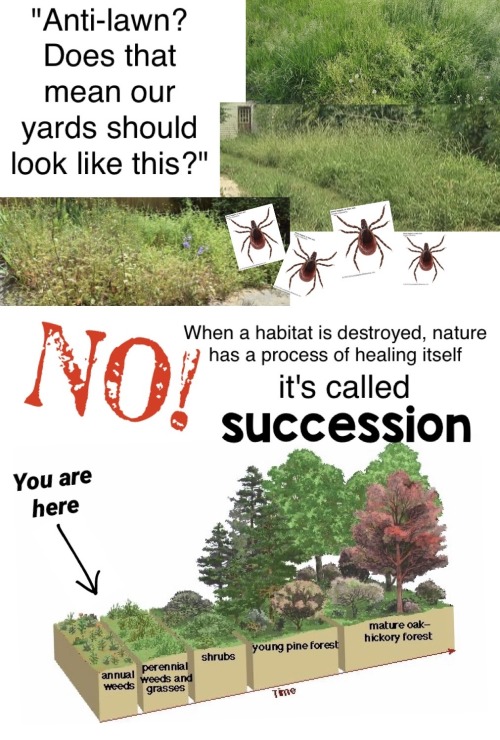
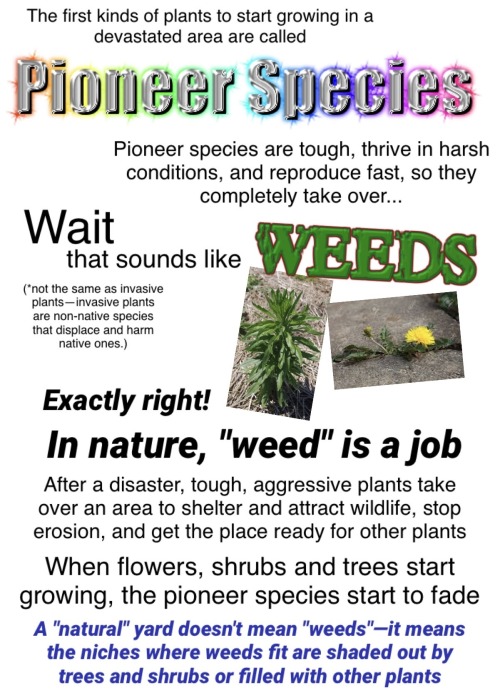
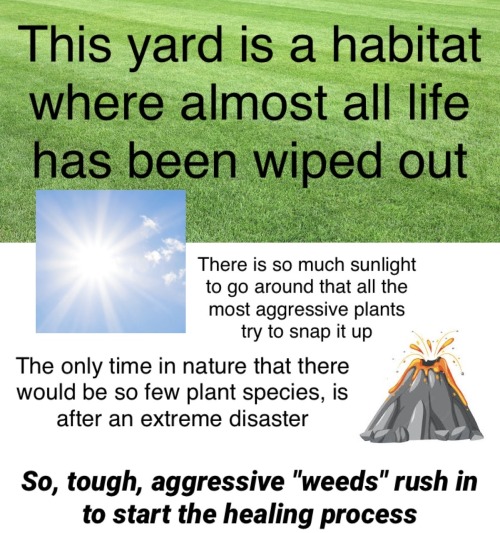
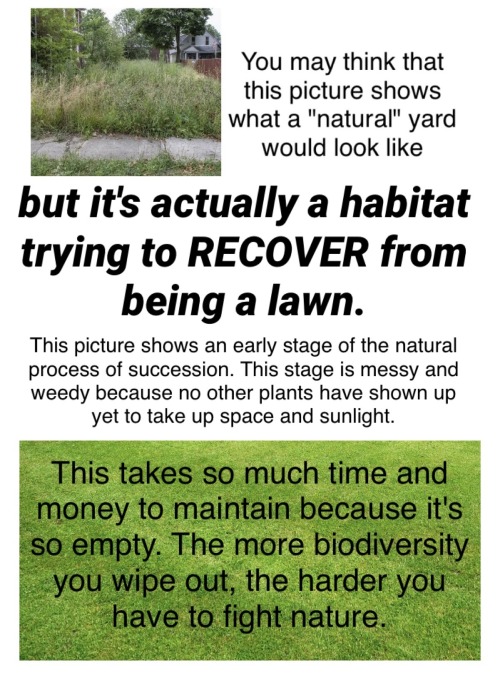
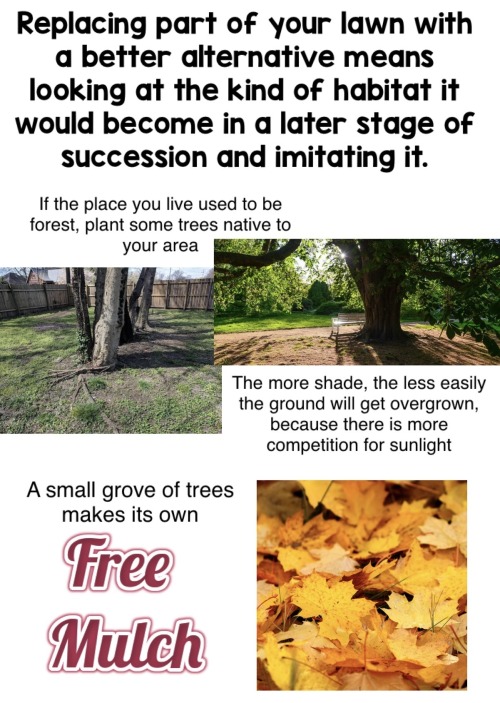
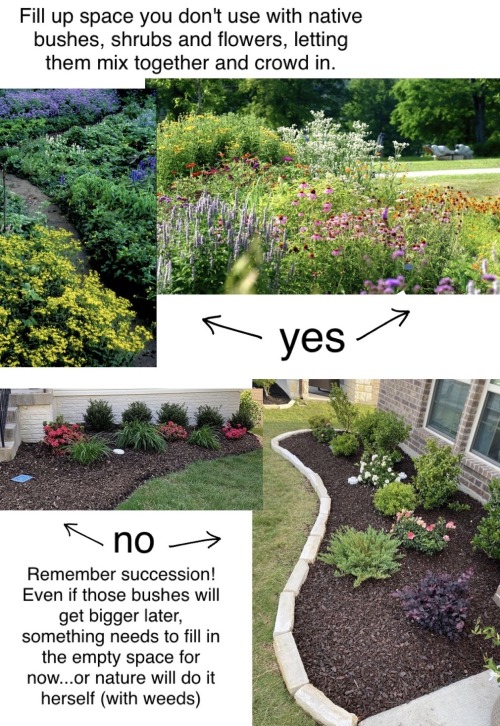
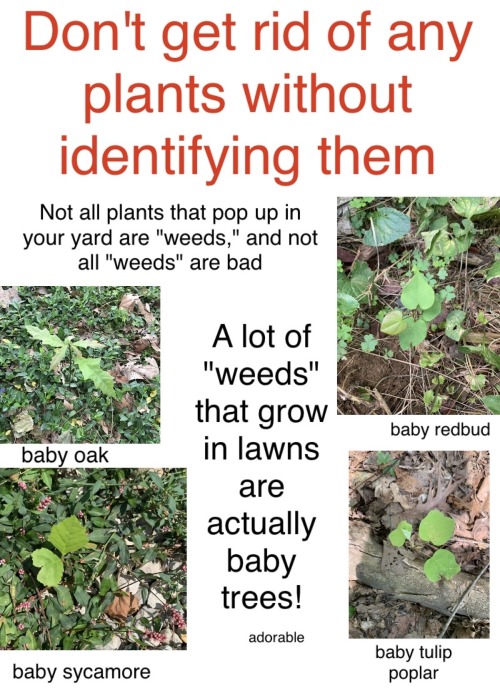
I...tried to make a meme and got carried away and made A Thing that is like partially unfinished because i spent like 3 hours on it and then got tired.
I think this is mostly scientifically accurate but truth be told, there seems to be relatively little research on succession in regards to lawns specifically (as opposed to like, pastures). I am not exaggerating how bad they are for biodiversity though—recent research has referred to them as "ecological deserts."
Feel free to repost, no need for credit
dark academia*: science version
*an aesthetic that revolves around romanticizing university and academia, classic literature, the pursuit of self-discovery, and a general passion for knowledge and learning
opening a lab notebook from decades ago and hearing the soft crackle of the pages, trying to decipher an old lab tech’s cursive handwriting
an entire shelf of old glass specimen jars with peeling and faded labels
someone’s brainstorming flowchart that was left on the whiteboard for so long the ink’s turned permanent
going to science museums on rainy weekends and quiet evenings
spending hours at the microscope staring at your samples because it’s like visiting a whole hidden world
reading papers so old they have hand-written labels on their figures
lab benches that stay forever occupied and forever messy
scattered paper towels with hurried last-minute math equations
equipment from years and years ago that are slowly losing their color saturation, but still work just fine
trying to make your lab notebook legible, but sometimes you just write too fast
walking a little ways off from the group during fieldwork, just to see what’s deeper in the forest
feeling a sense of beauty at dead and broken things–be they preserved samples of a once living thing, or an unusable piece of equipment no one can bear to throw away
walking around with the lab coat unbuttoned so it flows behind you like a cape
journal articles scattered throughout your desk, some in precarious piles, others folded open to a page you had meant to read months ago
1-hour lab meetings turning into 3 hour brainstorming sessions
always an entire wall of flasks, beakers, and graduated cylinders drying in the rack above the sink
sharing articles with colleagues who can’t access them bc fuck paywalls
a hallway filled with light-bleached posters from past-conferences
running multiple experiments at once, and turning to each one right before the timer goes off like a skilled dancer
blowing the dust off of old specimen display cases
bubbling flasks in one corner, a high-tech bench robot in the other corner
bookshelves overflowing with science textbooks and nonfiction, and binders containing data for all your different manuscript ideas (and you have quite a few of those)
walking everywhere with a timer clipped to a piece of clothing, forgetting about it, and having it go off in the middle of a conversation with a professor
If you have a senior to check on ask them to "borrow" something small so they think they're helping you.
My mom (72) recently downsized and moved close enough to me that checking on her in person regularly is not really out of my way, but when I was obvious about it she wouldn’t let me “stop-by” because she was, “fine”.
Well, one day I actually needed some aluminum foil so I called and asked if I could borrow enough to cover a baking tin because I didn’t want to run to the store. She said sure, but when I got to her house she needed furniture moved, a wasp nest removed, and her coffee pot fixed. After I got the foil I mentioned each thing cautiously and she let me take care of them for her. So next weekend I’ll need a cup of rice and check on her again.

TERBOL, Lebanon — Inside a large freezer room at the International Center for Agricultural Research in the Dry Areas, tens of thousands of seeds are stored at a constant temperature of minus-4 degrees Fahrenheit. After being threshed and cleaned, the seeds are placed inside small, sealed foil packets and stored on rows of heavy, sliding metal shelves.
Some of them may hold keys to helping the planet’s food supply adapt to climate change.
The gene bank can hold as many as 120,000 varieties of plants. Many of the seeds come from crops as old as agriculture itself. They’re sown by farmers in the Fertile Crescent region, where cultivation began some 11,000 years ago. Other seeds were deposited by researchers who’ve hiked in the past four decades through forests and mountains in the Middle East, Asia and North Africa, searching for wild relatives of wheat, legumes and other crops that are important to the human diet.
Continue Reading
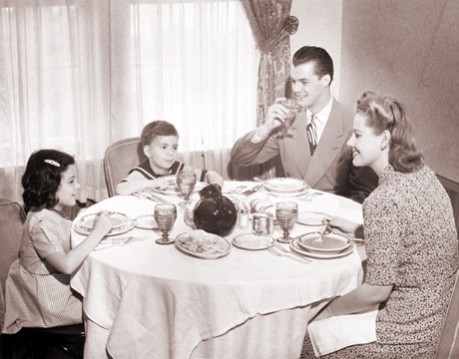
Distracted dining? Steer clear of it!
A new University of Illinois study reveals that distracted dining may be as dangerous to your health as distracted driving is to your safety on the highway.
“Being distracted during meals puts kids at added risk for obesity and increased consumption of unhealthy foods. In this study, we found that noisy and distracting environments affected parents’ actions, and we know that parents set the tone for the quality of family mealtimes,” said Barbara H. Fiese, director of the U of I’s Family Resiliency Center (FRC).
Barbara H. Fiese, Blake L. Jones, Jessica M. Jarick. Family mealtime dynamics and food consumption: An experimental approach to understanding distractions.. Couple and Family Psychology: Research and Practice, 2015; 4 (4): 199 DOI: 10.1037/cfp0000047
Hmm, maybe
“We never discard our childhood. We never escape it completely. We relive fragments of it through others. We live buried layers through others. We live through others’ projections of the unlived selves.”
—
Anaïs Nin, The Diary of Anaïs Nin (1944–1947)
Listen. Do it for the aesthetic. If you want to fill an entire 20 dollar sketchbook with anatomy drawings fucling do it. If you wanna get lost in the woods and come stumbling home with a bag of dried mushrooms and bones you go goblin dude. You aren't alive to go to work and hurt!! You're alive because bumblebees bump into little flowers and dandelions only open up in the sun! You're alive because cats purr when you pet them and coffee keeps you up all night!! Do everything for the aesthetic!!
Ahhh! This is so cool!
قالت : متى نلتقي؟ قال : بعد عاماً وحرب. قالت : متى تنتهي الحرب؟ قال : عندما نلتقي.
محمود درويش. (via child-of-the-univerrse)
-
 vul-chan liked this · 4 years ago
vul-chan liked this · 4 years ago -
 mashkaroom liked this · 4 years ago
mashkaroom liked this · 4 years ago -
 lil-feenz reblogged this · 4 years ago
lil-feenz reblogged this · 4 years ago -
 tiresomethinkbucket liked this · 4 years ago
tiresomethinkbucket liked this · 4 years ago -
 obstacle1and1985 liked this · 4 years ago
obstacle1and1985 liked this · 4 years ago -
 alexachilles reblogged this · 4 years ago
alexachilles reblogged this · 4 years ago -
 alexachilles liked this · 4 years ago
alexachilles liked this · 4 years ago -
 ciel-etiolee liked this · 4 years ago
ciel-etiolee liked this · 4 years ago -
 queer-cosette liked this · 4 years ago
queer-cosette liked this · 4 years ago -
 billiepiperchapman liked this · 4 years ago
billiepiperchapman liked this · 4 years ago -
 deardiary17 liked this · 4 years ago
deardiary17 liked this · 4 years ago -
 ludicrouslylorebound liked this · 4 years ago
ludicrouslylorebound liked this · 4 years ago -
 lostinfic reblogged this · 4 years ago
lostinfic reblogged this · 4 years ago -
 stillhidden liked this · 4 years ago
stillhidden liked this · 4 years ago -
 boredandtoooldforthis liked this · 4 years ago
boredandtoooldforthis liked this · 4 years ago -
 sullypants reblogged this · 4 years ago
sullypants reblogged this · 4 years ago -
 gonna-let-you-down liked this · 4 years ago
gonna-let-you-down liked this · 4 years ago -
 vintagemarlene liked this · 4 years ago
vintagemarlene liked this · 4 years ago -
 billionaire-philanthropist liked this · 4 years ago
billionaire-philanthropist liked this · 4 years ago -
 aeraxenia liked this · 4 years ago
aeraxenia liked this · 4 years ago -
 edelemon reblogged this · 4 years ago
edelemon reblogged this · 4 years ago -
 jesuisunanana2003 liked this · 4 years ago
jesuisunanana2003 liked this · 4 years ago
Here I share some scientific, artistic, literary and more material that I find interesting and important. I'm 30, studied biology in the University of Damascus. هنا اترجم بعض المقالات و المواد العلمية و الادبية و المواضيع التي اجدها مهمة و مثيرة للاهتمام.عمري 30 سنة, ادرس علم احياء بجامعة دمشق
80 posts